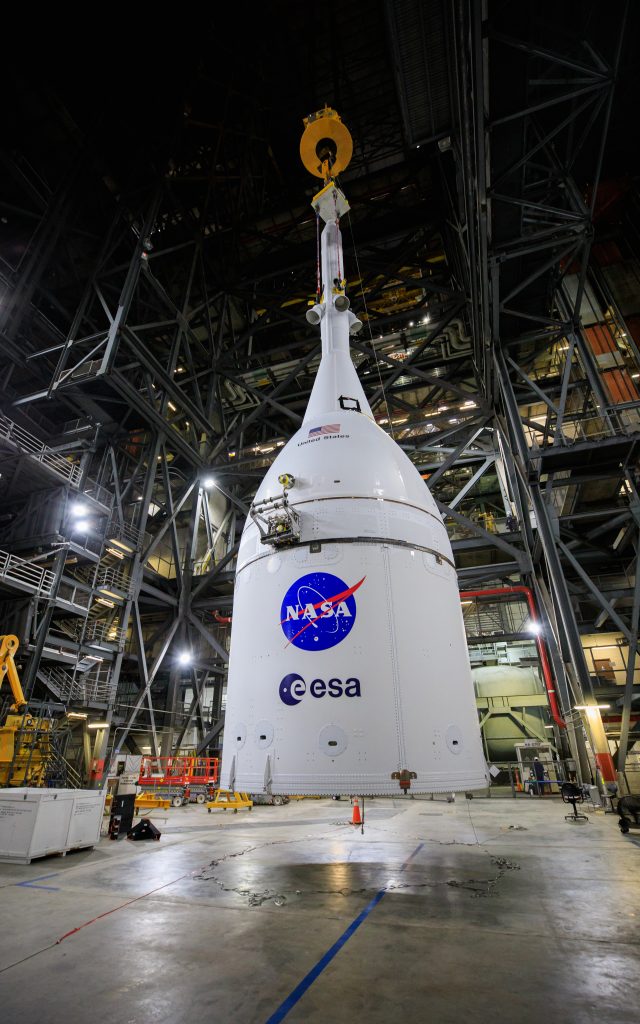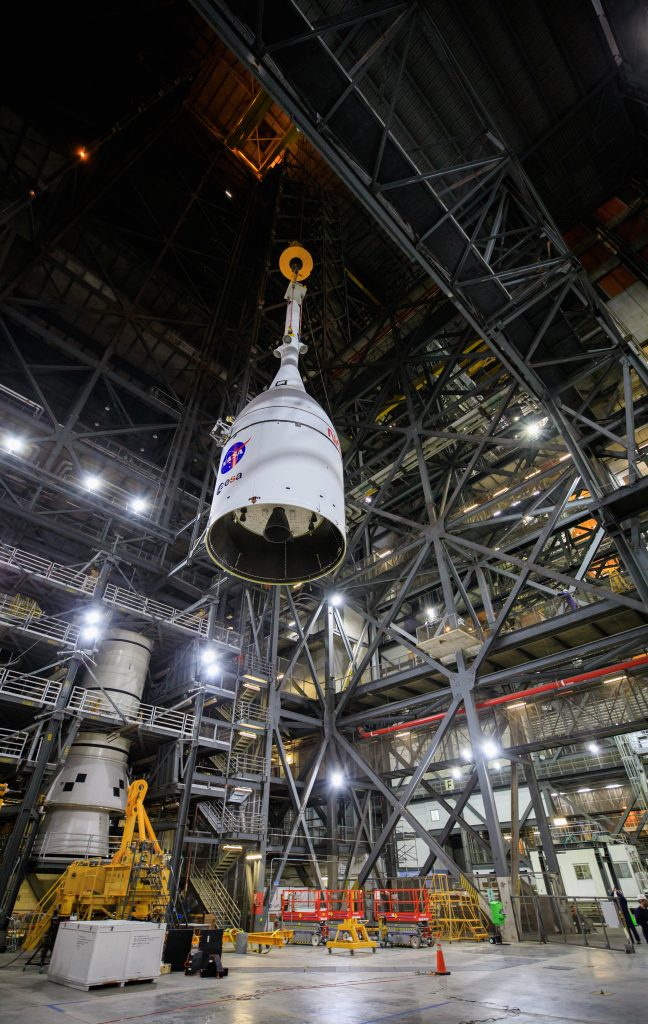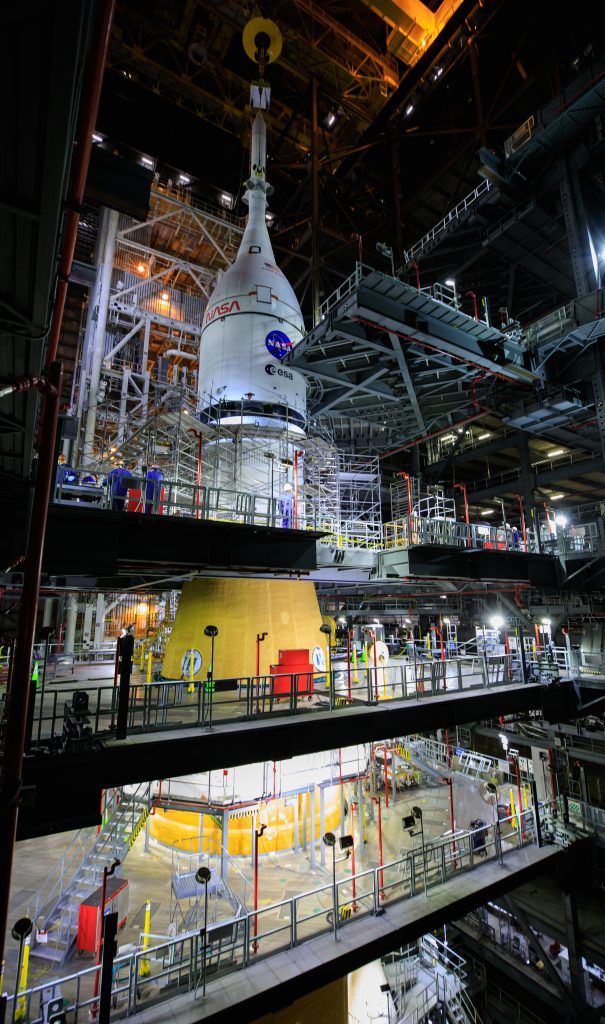The next step on the road to space was completed last week with the last pieces stacking up for the launch of the Artemis I mission around the Moon and back.
The Orion spacecraft was hoisted to the top of the fully assembled Space Launch System (SLS) rocket at NASA’s Kennedy Space Center in Florida on 21 October 2021. The European Service Module that will power the first Orion uncrewed flight, ESM-1, was gently lifted up in preparation for launch.

There was an opportunity to get a last glance from ground level at the back of the European Service Module during the lift and mate operations. Zoom in for a clear view of the main propulsion engine that belonged to the Space Shuttle, as well as five of the auxiliary thrusters.

The spacecraft is now secured atop the powerful rocket to enter the final preparations for the uncrewed flight test around the Moon.
What’s next
A series of tests will run before the targeted liftoff for deep space in February 2022. Up to five test campaigns will look at the rocket and spacecraft as one for the first time, building upon each other and culminating in a simulation at the launch pad.
Engineering teams will look at the interfaces, end-to-end communications, the sequence for countdown and wet rehearsal to load propellants, but also for removing the propellants if ever the launch is held off for another day.

NASA will set a specific date for the launch after a successful wet dress rehearsal.
Artemis I is the first in a series of increasingly complex missions for human deep space exploration. The European Service Module will power the crew module around the Moon and back with over 30 engines. Together, they will travel travel from Earth to the Moon, make two flybys and return.

 Automated Transfer Vehicle page
Automated Transfer Vehicle page ATV blog archive
ATV blog archive
Discussion: no comments